What Is Aluminium CNC Machining
Aluminum is one of the most machined lightweight metals today. Due to its unique properties and diverse applications, this element is one of the widely used machined elements in the topmost manufacturing sectors. CNC machining of this metal is second to steel in terms of machining frequency.Aluminum CNC machining has become increasingly popular in manufacturing processes of complex projects due to the favorable characteristics possessed by this metal, along with the ease with which you can machine it. Aluminum alloys are widely used globally and promise further integration within the industrial sector.
However, it is used very rarely in its pure form. Aluminum is used commonly as an alloy because it is very soft to the touch while also being malleable and ductile in element form. There are different alloys used for various purposes and, these Aluminum alloys form with drastically improved properties compared to the pure element.
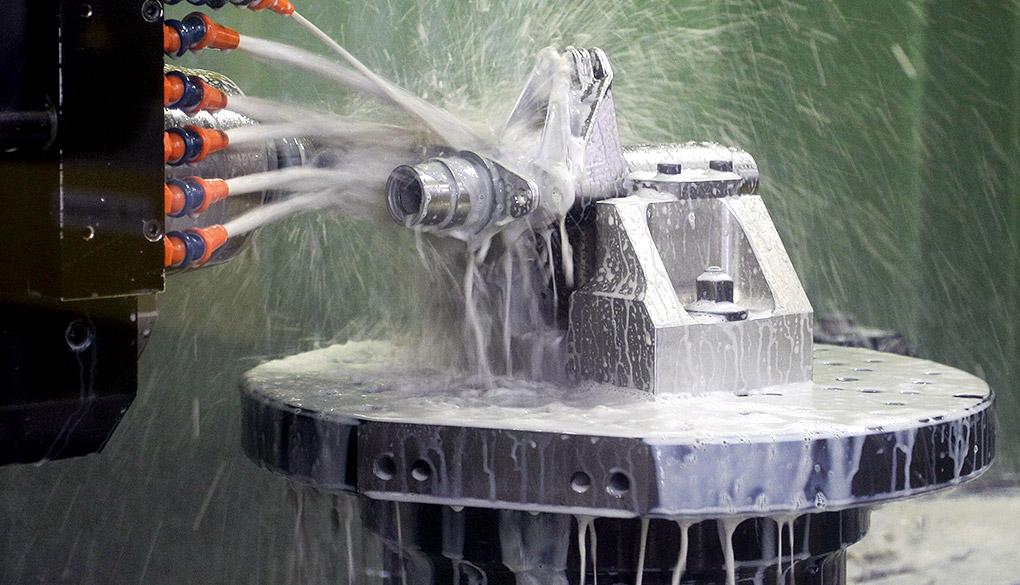
Table of Content
■ What is Aluminum CNC Machining?
■ What are the Advantages of Aluminum CNC Machining?
■ What Kind of Aluminum is Good for CNC Machining?
■ Applications of Aluminum CNC machining
■ High Precision Aluminum CNC Machining Process
■ Factors to Consider When Choosing an Aluminum CNC Machining
What is Aluminum CNC Machining?
Aluminum CNC machining is a process involving the use of Aluminum in the manufacturing of a product - due to its availability and ease of use in numerous grades.
CNC machines are specially designed devices that get their name from the computerized numerical control in their router. A lathe machine is a CNC machine that cuts metals into smaller pieces, sheets, and bits with great precision and accuracy. Grinders, lathes, and mills are all CNC machines because they require to create their prototypes with pinpoint accuracy.
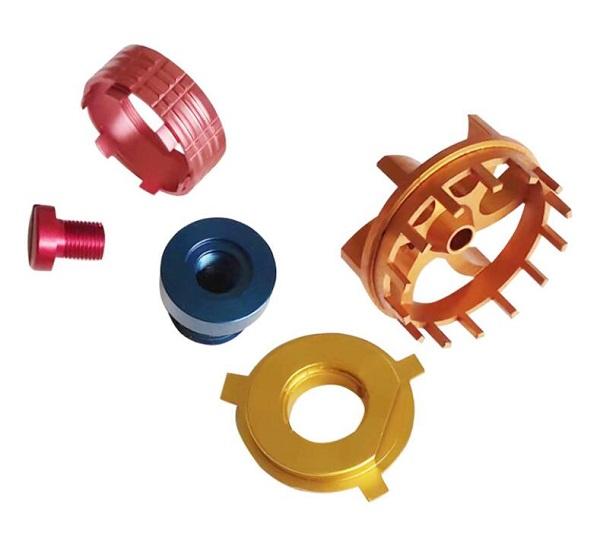
What are the Advantages of Aluminum CNC Machining?
Aluminum extrusion + CNC machining has many favorable qualities because of which it is used commonly in aluminum CNC machining. The following lists these attributes:
Machinability
Due to the softness and flexibility found in its pure form, Aluminum is one of the most CNC machined parts. Its physical characteristics allow the metal to be machined easily without causing excessive wear in the CNC machine, along with less hassle for the machine operator.
Moreover, this metal cuts easily, guaranteeing a professional finish to the end products for customer satisfaction.
Strength-to-weight ratio
Aluminum has a density equal to a third of steel. Therefore, it is very light in weight. Furthermore, it has a very high strength that makes it ideal for use in advanced technology. This unique strength-to-weight ratio has led to very high demand for this metal and its alloys in the automotive and aircraft industry, leading to a spike in Aluminum CNC machining.
Natural Corrosion resistance
Pure Aluminum has a natural tendency to oxidize when exposed to air which leads to the formation of a thin, transparent layer of Aluminum-oxide on the surface of the metal that prevents further oxidation of the metal, making it virtually resistant to rusting by blocking contact with water or air!
Like this, the metal has the property of excellent corrosion resistance.
Note: Shot blasting (using a high-speed rotating impeller) throw tiny iron or steel shots (at high speed) out of the surface of the part, so the oxide layer can be removed.
Shot blasting helps for cleaning the casting surface of the part and is used for regular shapes.
Electrical conductivity
This metal is a good conductor of electricity. Like generic metals, they can be bent into wires or shapes of various types using CNC aluminum machining and applied in technology where electrical conductivity is needed.
The electrical conductivity of Aluminum is 37.7 million Siemens per meter!
Recyclability
Since CNC machining in general and Aluminum milling, in particular, are large-scale processes, some of the chips and bits produced are bound to go wasted.
What makes Aluminum CNC machining so cost-effective is the easy recyclability of the metal without heavy expenditure or energy.
Hence, CNC machining Aluminum is quite common since investors prefer to have no wastage by having an environment-friendly metal that is readily recycled.
Performance at low temperature
Some materials tend to lose their structural integrity when exposed to low temperatures. Some lose their elasticity, rigidity or even suffer breakage at relatively low temperatures.
The miraculous part about Aluminum is that it has a high resistance to sub-zero temperatures, due to which it maintains its structural properties and remains soft, ductile, and malleable.
These properties further add to the high demand for high precision Aluminum CNC machining.
Anodization Potential
Anodization is a surface finishing process used to eliminate the chances of wear and corrosion on metal. It is quickly accomplished in Aluminum and further supports its usage in CNC machining.

What Kind of Aluminum is Good for CNC Machining?
Several different types of Aluminum alloys are CNC machined. Each alloy has unique properties and characteristics that decide its use.
ENAW-2011
This Aluminum alloy has copper as its primary alloying element (about 4-5%). This alloy is durable, light in weight, strong, have excellent strength to weight ratio, and very versatile because of which it can undergo high-speed machining, threading, and heat treatment – best for high-stress applications.
Therefore, this Aluminum alloy produces complex parts such as nuts, screws, bolts and, rivets. However, anodizing this alloy is recommended before use because it has low weldability and corrosion resistance.

EN AW-5083
This alloy is a blend of manganese, chromium and, magnesium. It has high resilience and can withstand very harsh environments.
Due to its incredible strength, it can maintain its structural integrity in low temperatures. Moreover, it also has excellent corrosion resistance (strength to weight ratio) both in chemical and marine environments, even after welding.
These properties encourage using AW-5083 in making cryogenic equipment, vehicle bodies, chemical equipment, and pressure applications.
EN AW-5754
This alloy is a wrought magnesium-aluminum blend with a high percentage of Aluminum. Therefore, it can be rolled, forged and, extruded.
It is also non-heat-treatable but can be cold worked to increase its strength. But this lowers its ductility. This alloy also has very high strength to weight ratio and corrosion resistance like the other alloys.
Therefore, we see its wide use in welded structures, flooring equipment, vehicle components, fishing poles, and rivets.
EN AW-6061
The above is a silicon and magnesium-based wrought aluminum blend. Despite having average strength and weldability, this alloy has exceptionally excellent corrosion resistance.
Therefore, one can see its use in construction, food containment, automotive engineering, and medical equipment.
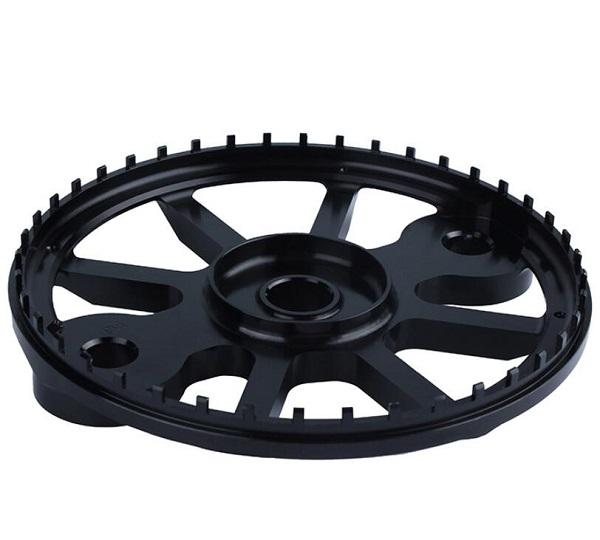
EN AW-7075
This aluminum alloy has zinc as the primary alloying metal and possesses different mechanical properties.
Despite being notorious for its poor weldability and cold-temperature performance, the AW-7075 has an outstanding strength to weight ratio and incredible corrosion resistance in both air and marine applications.
Hence, it is one of the most widely applicable and CNC machined Aluminum alloys and is used to manufacture hang glider and bicycle frames, mold tool production, and rock climbing equipment.
Applications of Aluminum CNC machining
1) Aerospace: the mechanical properties of Aluminum alloys beg their use in building rockets and aircraft bodies.
2) Sports: CNC machined alloys are ideal for making baseball bats, hockey sticks, and poles due to their flexibility and high strength.
3) Cryogenics: Due to the ability of some Aluminum alloys to withstand sub-zero temperatures, they are also used to make cold storage, ice containers, and mountain climbing equipment.
4) Food and Pharmaceuticals: Aluminum does not react with food or chemicals due to its passive nature. So industries use it to make pill strips and re-sealable bags.
5) Reinforcement work: Some Aluminum alloys have very high strength and impact resistance. Therefore, they play a vital role in construction and reinforcement work. These packages are also recyclable.
6) In recent years, the demand for CNC machined Aluminum has risen to reach applications in making spline shafts, front panels, dowel pins, EMI-housings, and even light fixtures.
High Precision Aluminum CNC Machining Process
CNC Turning
In CNC turning, the piece that has to be machined is rotated at high speeds by the CNC machine. The single-point tool used for cutting the workpiece remains stationary to attain a clean and precise cut.
This type of motion is called feed motion and is used to remove thin layers of material from the workpiece to design the ideal shape.

CNC Milling
The above-mentioned is probably the most common method used when machining Aluminum parts.
This operation involves a CNC machine that rotates a cutting tool at high speed while the workpiece itself stays stationary.
The cutting tool can move in all directions along its axis while the same feed motion removes material.
If you want to remove material at an accelerated rate, the workpiece, along with the CNC machine, is rotated at high speed. This method is helpful for higher accuracy.
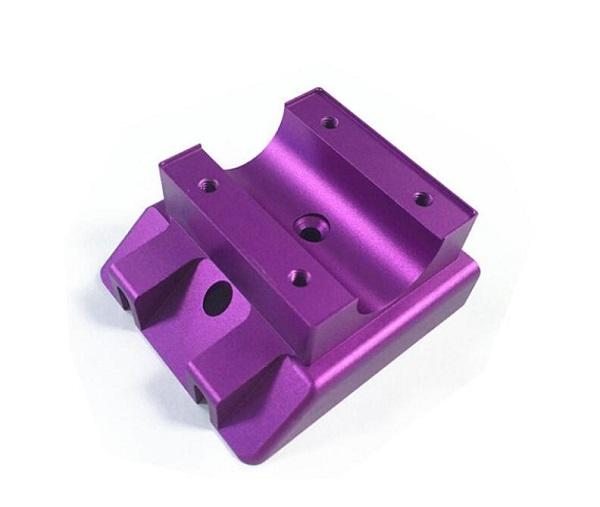
CNC Drilling
This process once again involves a CNC machine that operates directly on the workpiece.
The CNC machine has a fixed drill bit on it which is rotated via a motor and acts perpendicularly on the surface of the workpiece, thereby creating a perfect hole in it.
The drill bit used depends entirely on the cavity you are drilling into the workpiece.

Facing
This process is an additional operation and is done along with CNC milling or turning. This time, the cutting tool has a flat base, which is applied to the cross-sectional area of the workpiece to shave material off of it.
This operation may also be called a motorized version of the filing.
Pocketing
Another variant of CNC milling, pocketing, or pocket milling is helpful to remove material of a hollow Aluminum bit by using a CNC machine. It is a more precise and invasive form of CNC milling.
Factors to Consider When Choosing an Aluminum CNC Machining
Choosing the right tools and advanced features for CNC aluminum machining can get quite time-consuming for technicians.
Hence, it is vital to understand the factors that influence this selection.
Tool Design
The excellent machinability of Aluminum depends on the tools you are using. Hence, tool geometry plays a vital part in CNC machining because such mechanical properties decide the quality of the aluminum parts.
To prevent rough cuts and high resistance upon CNC aluminum machining, the drill bits and the cutters you use should have at least 2-3 flutes to enable a smooth finish. A high number of flutes results in smaller chip valleys (roughness).
This modification leads to a more gentle drill bit that takes a long time to drill away.
By having three flutes on the drill bit, the CNC machine has a good cutting force along with a reasonable amount of chip clearance. This way, the process becomes time-effective and cleaner.
Helix Angle
This angle is a feature of drill bits used in CNC machines that decides: Aluminum machinability, the finish, and material clearance in Aluminum CNC machining.
This angle lies between the drill axis of rotation and the tooth on the drill.
If the Helix angle is greater than 45 degrees, the surface material chips away quickly and produces large amounts of heat due to friction, which may weld the surface of metals in CNC Aluminum machining and even lead to drilling bit burn-outs.
It is a good idea that a 30 to 35 degree Helix angle be used for the ideal cutting rate, while a 45-degree angle guarantees a good finish.
Clearance Angle
This angle decides how readily the drill digs into the Aluminum workpiece.
If the clearance angle is too small, the drill bit will not go through the aluminum workpiece. A large one will lead to a very rough descent into the material.
Using a drill bit with a 6 to 10-degree clearance angle ensures a smooth drill, especially for Aluminum CNC machining.
Tool Material
Since Aluminum is soft and flexible (unlike hard metals), you cannot use the pure metal itself for drilling. Instead, you can use carbon compounds called carbides because they are strong and can withstand high temperatures due to friction while drilling.
Cobalt is also used but is not very common because it reacts with Aluminum at high temperatures.
The cobalt may blend with the Aluminum discharge on the edges of the workpiece and lead to an unwanted side operation. You can also use diamond-like or Titanium Nitride coatings in CNC Aluminum machining.
Cutting speed
Aluminum being one of the most essential industrial material can easily withstand high-speed cutting. Therefore, drilling speed is not an issue in Aluminum CNC machining.
It depends entirely on the limit of the machine itself. It is also important to remember that high speed can often compromise accuracy because it may lead to erratic cutting patterns y the CNC machine and may even lead to poor machine health in the long run..
Cutting Fluids
Despite the easy Aluminum excellent machinability, it is a bad idea to cut the metal dry.
Not only can this damage the CNC machine but could lead to a rough finish on the workpiece and built-up edges.
Some forms of lubrication, as emulsifying or mineral oils, are very effective for Aluminum CNC machining or its alloys.
Oils having chlorine or sulfur as active elements must not be used. Such oils can stain the metal surface. Lubrication is of the essence since it helps to keep production costs low and extends machine life.
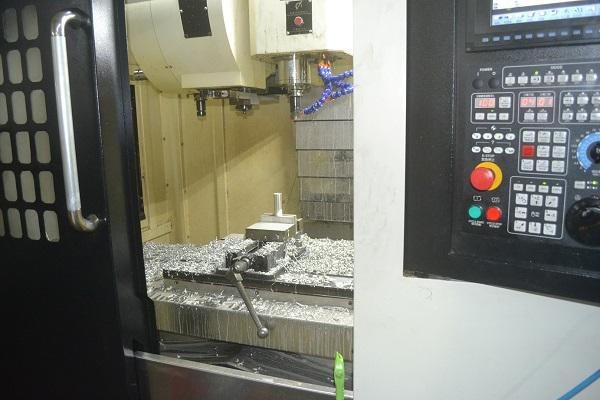
FAQs
(1) Can you CNC mill Aluminum?
You certainly can! CNC machining Aluminum is possible by using any CNC router. This process can be very efficient if you use the correct equipment, along with a quick feed rate. However, you need to read the instructions manual before operating any CNC machine. This way, you will guarantee your safety and success in your work.
(2)What type of most popular Aluminum alloy can I use for CNC machining?
Although you can use many different popular Aluminum alloys for CNC machining, the AW-6061 is widely used. It has high machinability and low cost. Along with this, it has a great strength-to-weight ratio, excellent corrosion resistance , recyclability, and is also heat treatable.
(3)How can you CNC cut Aluminum?
The following are some tips that you can use to successfully CNC machine Aluminum:
1) Don’t be in a hurry. Go slow and work carefully
2) Calculate your feed and speed magnitude
3) Use CNC routers for cutting Aluminum
4) Lubricate
5) Be precise and take your time
6) Use drills with smaller diameters to attain a cleaner and more controlled cut. This way, the finished Aluminum alloy will be more professional and sell well
7) Clear away all chips for a smooth finish
(4)Is Aluminum easy to machine?
Aluminum is one of the most readily machined metals. It does not wear or release excessive debris, nor does it damage the CNC machine.
Aluminum is soft and chips easily. Hence, it is becoming increasingly popular in CNC machining.
Compared to steel, Aluminum is now the second most CNC machined metal. It is lighter than steel and is also stronger. Therefore, it is very easy to machine.
Economists predict that Aluminum might overtake steel and become the most widely demanded metal in the global industrial sector. in the global industrial sector.
Note: For aluminum parts having big processing allowance, you need to avoid an excessive concentration of heat so there’s less thermal deformation and better heat dissipation. The method that helps you achieve this is known as symmetrical machining.
Can Worthy Hardware CNC machine Aluminum?
Worthy Hardware is a CNC precision contract machine shop located in Dongguan, Guangdong, China. We also provide services like CNC milling, machining, and turning, along with laser cutting and stamping and services regardless of whether the project submitted is from an industrial setup or a personal project.
Worthy Hardware has a thorough guide for all those looking to CNC machine Aluminum on its online page. You may find information on what factors you should consider when procuring raw material and the different processes involved in CNC machining Aluminum.
In addition, various helpful tactics will enable you to CNC machine Aluminum at maximum efficiency with the best chance of success can also be found on the website. Worthy Hardware also has various Aluminum alloys available. This feature enables us to guarantee customer satisfaction with a professional finish on all prototypes by enlisting the help of their metal surface-finishing services.
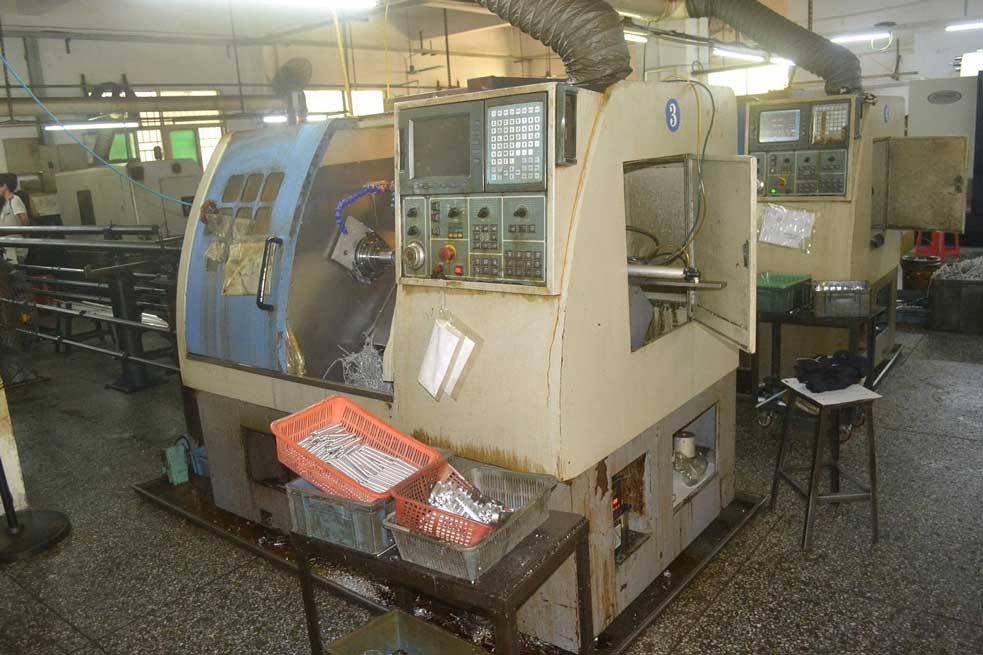
Worthy Hardware is a CNC manufacturing and sheet metal fabrication company,including CNC machining services,CNC milling services, CNC turning services, laser cutting services and stamping services.Call us +86-76989919645 or email us [email protected] for more discounts for your projects.

